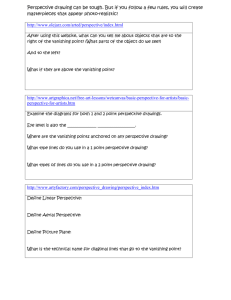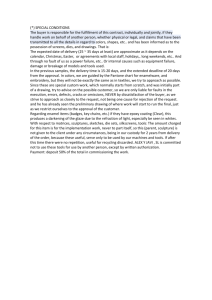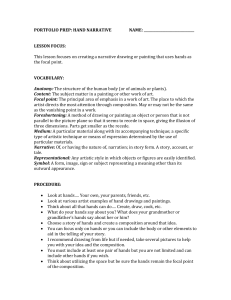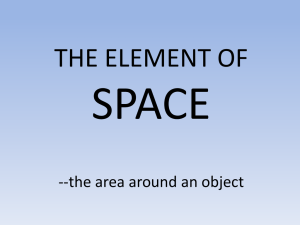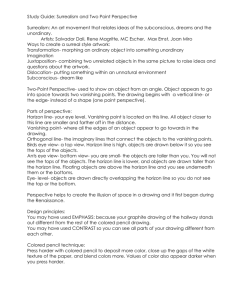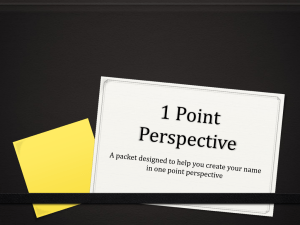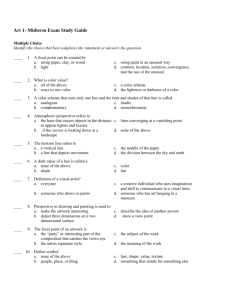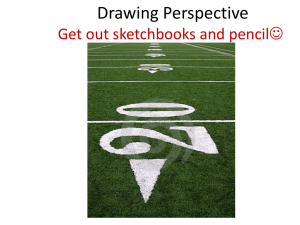Perspective Powerpoint
advertisement
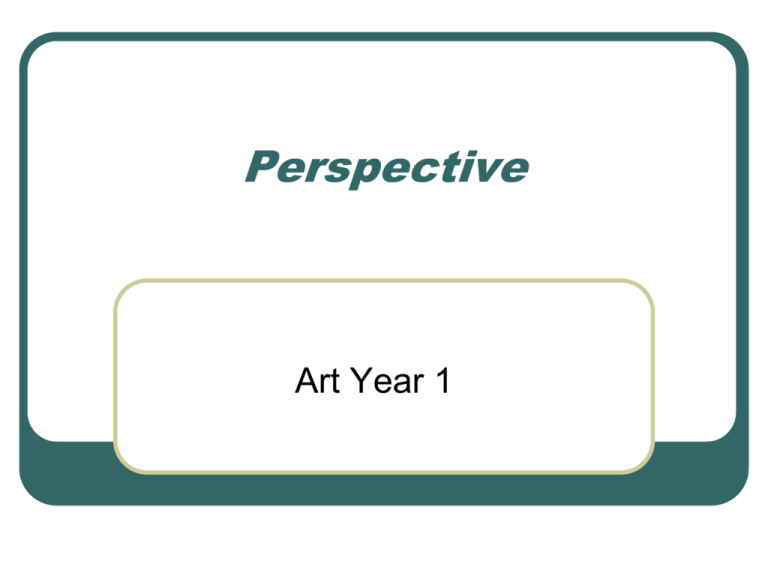
Perspective Art Year 1 Perspective the science of painting and drawing so that objects represented have apparent depth and distance… Perspective Linear Perspective A system of drawing or painting in which the artist attempts to create the illusion of spatial depth on a two-dimensional surface. Following consistent geometric rules for rendering objects as they appear to the human eye. • Example: we see parallel lines as converging in the distance, although in reality they do not. • Stated another way, the lines of buildings and other objects in a picture are slanted inward making them appear to extend back into space. • If lengthened these lines will meet at a point along an imaginary horizontal line representing the eye level. Each such imaginary line is called an orthogonal. The point at which such lines meet is called a vanishing point. Terms to know: Picture Plane – the imaginary window that frames the things you are attempting to draw or paint Horizon Line – where the sky meets the earth Eye Level - the horizontal level in line with your eyes when you’re looking straight ahead Vanishing Point – the point at which all parallel lines meet and or vanish as they recede into the distance Terms to know (cont.) Converging Lines – parallel lines that appear to approach the same point on the horizon Overlap – the placement of one object in front of another to create the illusion of depth Size and Space Variation – the drawing of objects that are in reality equally sized and spaced objects so that they get smaller and closer together as they approach the horizon Modeling – the shading and texturing of an object in a drawing or painting so that it appears to have form, depth, a front, sides and a back, there is something behind it if you could only see. Color and Value Change – the use of a lighter value of color in the areas you want to appear further in the distance Rules of Thumb: Things appear to grow smaller as they recede into the distance Vertical lines in 1 point and 2 point perspective will always be parallel to the sides of your picture plane Horizontal lines will only be parallel to the top and bottom of the page in 1 point perspective Generally, objects that are closer are shaded darker than ones that are in the distance. Draw an “X” across from corner to corner. Use a ruler. Center becomes Vanishing Point. Draw the Horizon Line across the center of the page. Begin drawing boxes of different sizes. Project Requirements Use majority of space At least 7 Boxes Total! • Positive space-boxes • Negative space-empty space • 1 box with an opening • 2 boxes overlapping Next Practice Perspective Practice Shading-value scale Quiz on terms Officer and Laughing Girl, painted probably about 1655-60 Oil on canvas, 19 ⅞ x 18 ⅛ inches Linear Perspective M.C. Escher Town Hall, Delft 1939 woodcut Complementary Colors Complementary colors are pairs of colors which, when combined, cancel each other out. This means that when combined, they produce a grey-scale color like white or black. When placed next to each other, they create the strongest contrast for those particular two colors. Complementary Colors

